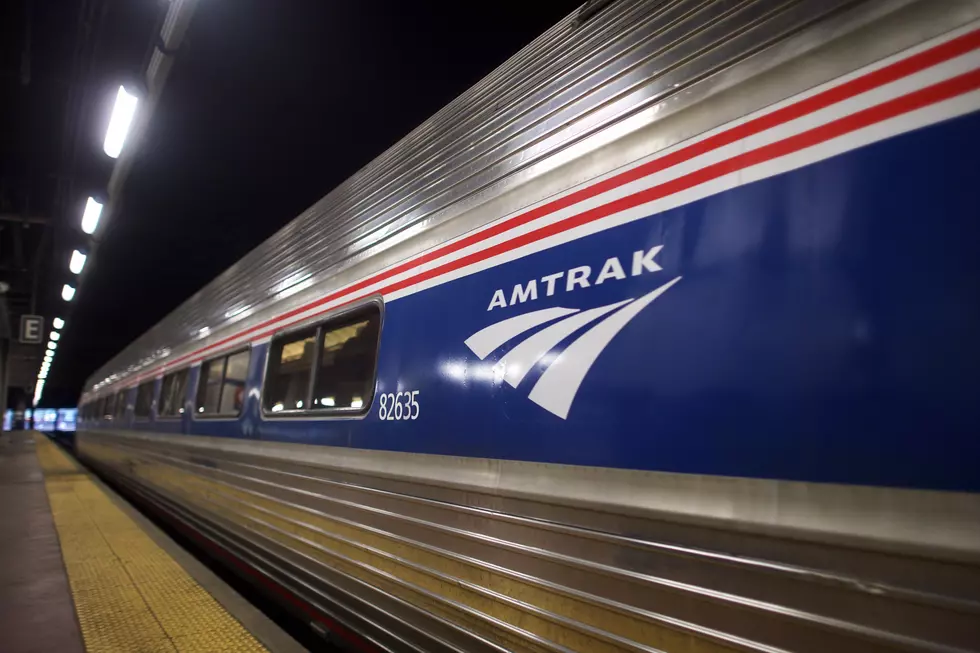
No video to help Amtrak probe — despite NTSB recommendation
WASHINGTON (AP) -- Five years ago, federal accident investigators recommended that the government require video cameras in locomotive cabs to record engineers' actions. But it didn't happen. Now, that's left a gap in unraveling last week's fatal Amtrak derailment.
It's an old story for the National Transportation Safety Board. Accidents occur, people die and there is a clamor for action. Later, when attention moves elsewhere, recommendations frequently lag for years. Some are never realized.
In the Amtrak crash, the train was equipped with a "black box" data recorder and a camera focused on the track ahead. Information from those devices shows that in the last minute before the crash the train accelerated rapidly, reaching 106 miles per hour just before entering a curve where the speed limit was 50. Maximum braking power was applied in the last few seconds, but it was too late.
The train derailed, leaving eight people dead, about 200 injured and a mangled mess of rail cars. Amtrak service between Philadelphia and New York didn't resume until Monday.
What investigators would like to know is why the train accelerated. Was it a deliberate act by the engineer? An accident? Or was there some other reason?
Questions have arisen whether the Amtrak locomotive was hit by a projectile of some kind as it passed through Philadelphia. An engineer for a local commuter railroad reported being hit by something shortly before the crash, and a conductor on the Amtrak train has told investigators she heard the Amtrak engineer, Brandon Bostian, say over a radio that their train had been hit as well.
NTSB said Monday that the FBI has concluded no bullet struck the train, and the board is uncertain whether it was hit by anything.
Bostian, who suffered a head injury in the crash, has told investigators he can't remember anything after leaving Philadelphia's 30th Street station, the last stop before the derailment, until after the crash.
It's exactly the kind of circumstance that the NTSB's recommendation for inward-facing video and sound cameras was supposed to address, says Jim Hall, who was the board's chairman in the 1990s. It's not unusual for engineers to be killed in train crashes, or to be seriously injured and not remember details clearly.
"To not have all the investigative tools when people have lost their lives in order to understand what occurred and to prevent it from recurring is a travesty," Hall said. "The black box can tell us what the controls did, but we don't know exactly what the operator did."
As recently as 2012, the Federal Railroad Administration had opposed requiring the cameras, citing concern that they might lower employee morale and worrying that the images might be used punitively by railroads. Labor unions representing railroad engineers have also strongly opposed the cameras.
"Installation of cameras will provide the public nothing more than a false sense of security," Dennis Pierce, president of the Brotherhood of Locomotive Engineers and Trainmen, said following a December 2013 commuter train crash in the Bronx, New York, in which it was later determined the engineer had fallen asleep. "More than a century of research establishes that monitoring workers actually reduces the ability to perform complex tasks, such as operating a train, because of the distractive effect."
The union didn't immediately respond to questions from The Associated Press.
The railroad administration said it supports use of the cameras. In the past year, the agency has told the NTSB that it intends to propose regulations requiring the cameras. However, no regulations have yet been proposed, and it typically takes federal agencies many months, if not years, to move from proposals to final regulations.
The NTSB first recommended requiring audio recordings of sound in locomotive cabs in the late 1990s following a commuter rail crash in Silver Spring, Maryland. None of the operating crew members survived the crash, and the board was unable to determine their actions leading up to the crash. The recommendation was repeated in about a dozen more crash investigations since then.
It was revised to include video cameras with sound five years ago as the board wrapped up its investigation into one of the worst train collisions in memory -- a Metrolink commuter train that failed to obey signals and collided head-on with a Union Pacific freight train near Chatsworth, California, in 2008. Twenty-five people were killed, including the Metrolink engineer, and over 100 injured.
The NTSB later determined the engineer was distracted and didn't notice the signals because he had been sending text messages during the trip. But some deduction was involved in that conclusion.
"Clearly the visuals would have revealed what actually happened," said Mark Rosenker, who chaired the NTSB at the time of the Metrolink accident.
Over the past five years, the safety agency has repeated the camera recommendation in accident after accident, including as recently as last November when the board concluded its investigation into a collision between Union Pacific and BNSF Railway freight trains near Chaffee, Missouri, in May 2013.
"The NTSB remains concerned that the Federal Railroad Administration's delayed action .... leaves many safety lessons unlearned and further delays improvements for the safety of railroad operations," the board said at the time.
© 2014 The Associated Press. All rights reserved. This material may not be published, broadcast, rewritten or redistributed. Learn more about our Privacy Policy and Terms of Use.
More From New Jersey 101.5 FM









